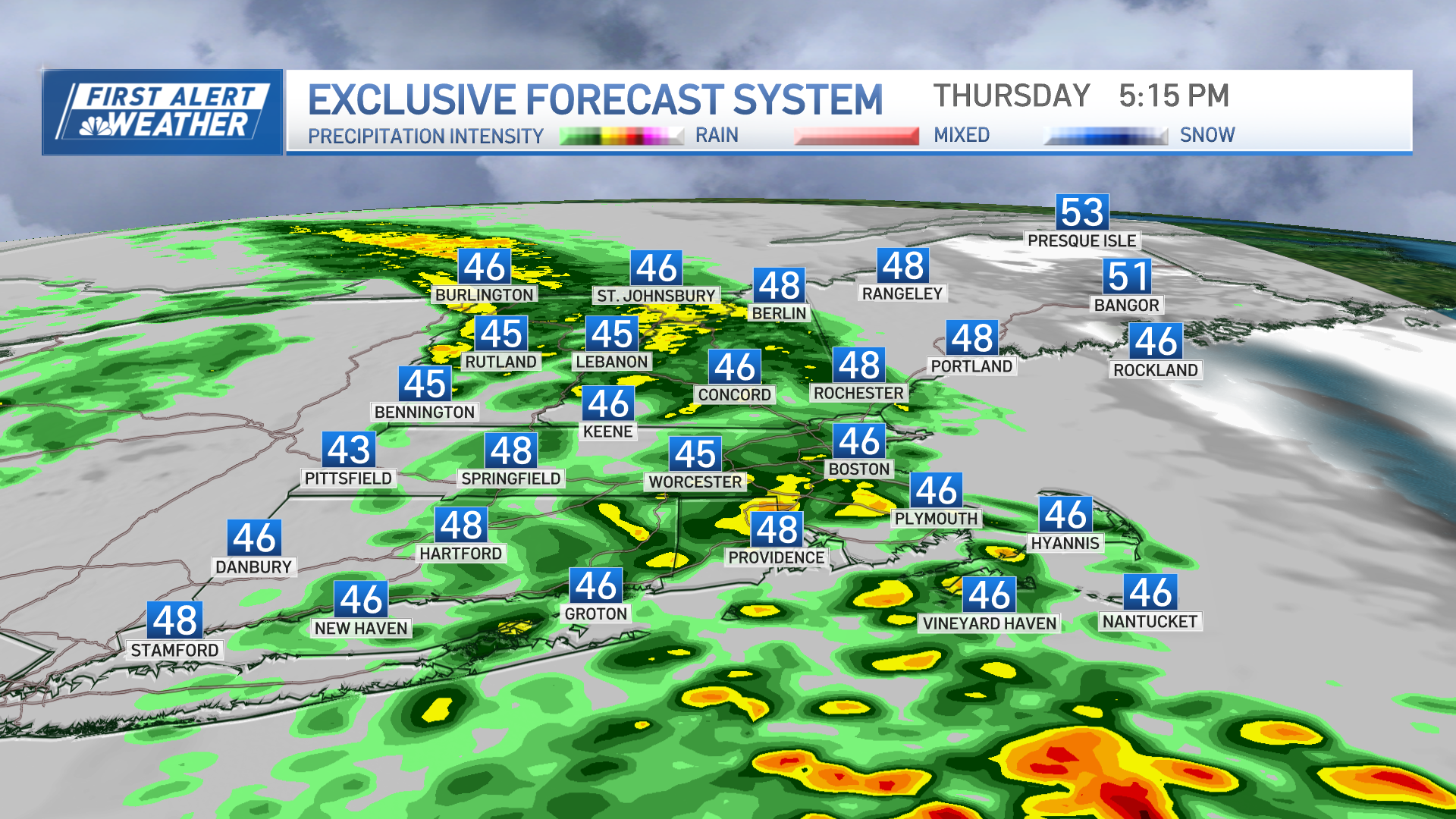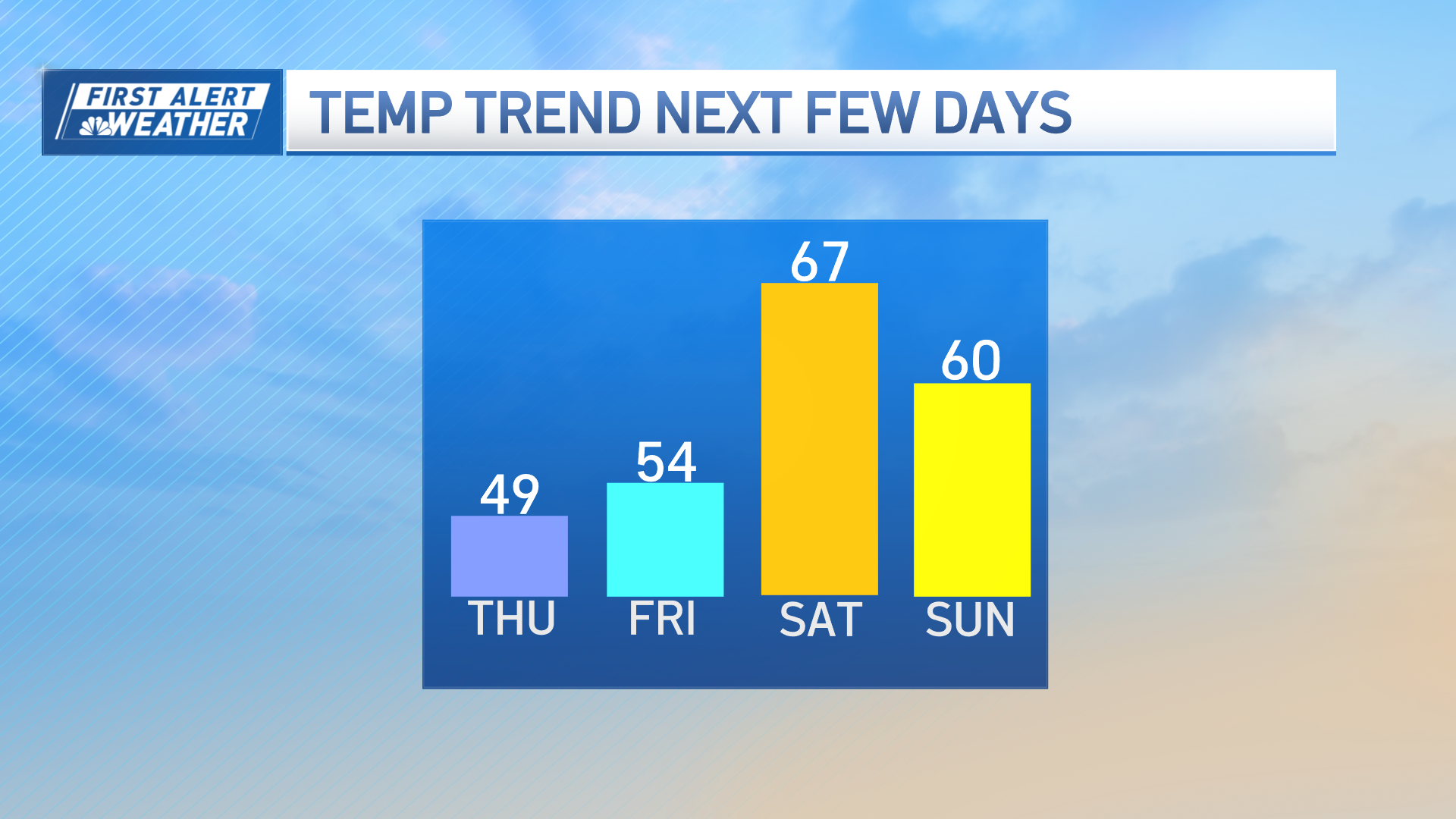The following is a technical discussion of the going forecast on NECN. It's intended for those who either actively forecast, or have a passion for the science of meteorology, but I invite all to read if you'd like - the acronyms you'll see represent various computer guidance products, and if you like to see that there's more behind a forecast that just guesses, computers and sensationalism, hopefully this will expose you to some of the concepts - these are just the proverbial tip of the iceberg:
New England is on the cusp of a storm that poses classic winter storm challenges for our region - namely, precipitation type and amounts of each type, which will depend upon a matter of one or two degrees Farenheit.
This morning's forecast features a cold scenario, hence the snowfall totals of 6" as far southeast as portions of Bristol County, MA. There is ample reasoning for this forecast decision, though also tremendous respect for the inherent uncertainty that may spell its demise, resulting in the quicker transition to rain. First, there is the tremendous agreement seen in the ECMWF, GFS and GEM guidance, all supporting a rather rapid transition to rain out to about Route 495 in Eastern MA - this would mean very little snow for the Boston area. The NAM has been the colder of the guidance solutions, and has largely been scoffed at after its performance this winter. Two important points: 1) The NAM hasn't been as bad as its internet social media reputation would suggest, and 2) The NAM has verified better on rain/snow lines in New England so far this season, beating both the GFS and ECMWF.
For the first point, regarding NAM performance, below is the Equitable Threat Score for the NAM, GFS and SREF. Equitable threat score is a way of measuring model precipitation forecast performance, and note, below, that the NAM has outperformed the GFS over the Northeast US at .25, .50 and .75 inch precipitation thresholds, and was nearly equal to the GFS in .01 and .10 precipitation amount categories. I would argue that the slight loss in the .01" category actually comes from the NAM underforecasting light precipitation events - or more specifically, the north side of precipitation shields that have penetrated into arctic air. Worth noting, the SREF reigns supreme in higher precipitation categories.
The issue of rain/snow line is not a new win for the NAM, either. With a higher resolution, the model has long been better at resolving surface airmasses, and this is critically important when resolving the difference between ocean air and antecedent arctic air. That tendency has held true thus far this winter...while some forecasters may discard the NAM entirely, those who use it actively have seen its superior performance in marginal temperature regimes. While the NAM rarely has totally nailed the location of rain/snow lines, it has been far closer than its counterparts thus far this season. The result of this difference in handling low-level airmasses is to see vastly different snowfall solutions, if you compare the guidance. For instance...
12Z Wednesday NAM snowfall map:
12Z Wednesday GFS snowfall map:
Of course, those of us who forecast (and most still reading the technical discussion this deep in either love the science, or are forecasters) know these snowfall maps can do well at times, and be misleading at others, depending upon snow to water ratios, tied to crystal growth and thermal profile through the cloud layer. The same can be said for precipitation type algorithms, which do an excellent job of estimating precipitation type, but surely are not the be-all and end-all of the forecast. Consider this precipitation type map from the 12Z NAM, valid at 17Z (noon EST) Thursday - raining in Boston:
Now, consider the low-level thermal profile for Boston from the NAM, featured below. Read the cross-section from left to right and you'll notice the substantial warm layer that moves into Boston from 925 mb up, but that's not until very late in the day. The remainder of Thursday, Boston remains on a very fine line - surface air warms to as much as 2° Celsius, but the profile from 975 mb up is sub-freezing, and for a time Thursday afternoon, even the surface temperature at Boston cools so the entire column is sub-freezing:
This is as marginal of a scenario as one can get for the City of Boston, and we all know it can snow - and accumulate effectively - at 33 or 34°. So, now we're talking about a scenario where dynamic cooling can have a huge real-world impact by lowering the temperature by only a degree or two. What's even more interesting is a running comparison of precipitation-type - that is, even if you take the precipitation type straight-up from the algorithm, note the trend...if you look at the GFS runs that produce snow in Boston, generally you're looking at around .15" QPF falling as snow - a paltry one to two inches of snow in Boston. If you look at the NAM, four runs in a row have put out 1.15" or greater of liquid equivalent as snow. Of course, given wet snow and mix with rain you're probably looking at under a foot, but this should be enough that we at least are humble enough to acknowledge the high-end potential of snow with this storm, in addition to the low-end potential:
Of course, what satands out like a sore thumb on this should be the huge burst of snow now showing up on Friday morning! The comma head, wrap-around snow with this system has only grown more impressive in all model guidance. That said, I'm always hesitant to trust and base a forecast heavily on the impact of a comma head, because they can be nasty and blizzard-like when they hit, but if you're just south of it, no impact at all. So...I'd like to get a better handle on this as additional guidance comes in, but the 500 mb vertical velocity on the northwest side of the upper low as it closes off is, for lack of a better term, epic:
In the end, I tried to strike a balance between the potential snow impacts based upon all of this, weighted toward the better-performing (yes, I said it!) NAM and the acknowledgement that a marginal thermodynamic profile with heavy precipitation often falls to the snow side instead of the rain side. If, upon full review of the rest of the data this morning and overnight, it becomes apparent that the warmth is just too strong, amounts will be adjusted downward, as it is only the foolish forecaster who lets pride interfere with accurate prognostication.
The second item of interest for this storm is the wind with this system. Note the 50-60 knot 925mb wind cranking on the north side of the rapidly intensifying cyclone at 21Z (4 PM EST) Thursday. Forecasts indicate mixing along the coast should be from the surface to at least 925mb and perhaps even 900 mb at that time, which seems reasonable. As such, gusts to 60+ mph may be measured at the immediate coast. Farther inland, a colder surface dome may inhibit such effective mixing, but gusts to 45 mph at times, as exhibited in guidance surface gust algorithms, seems reasonable. This raises the potential for scattered outages both in the rain area (higher wind gusts) and snow area (weight of pasty snow with wind), at least in the Eastern half of New England, and where precipitation type remains snow, bouts of near-blizzard conditions would be possible at times:
In summary, there's a lot that can go wrong with a forecast in this storm - no matter which way one leans. This is a classic, challenging New England setup that will bring vastly different outcomes based upon one or two degrees Farenheit, to an area that is heavily populated specifically in that marginal zone. Personally, I will be paying close attention to the trend in the higher-resolution modeling over the coming 24 hours and ready to slash forecast snow numbers for some areas if a warmer trend results. On the opposite end of the spectrum, if you're thinking low, be ready to boost them if the cold does not yield. Either way, this is the type of event we love, and one that gives the opportunity for deep thought and analysis, rather than just following the majority of guidance. We'll see where we end up.
Weather Stories
-Noyesie



